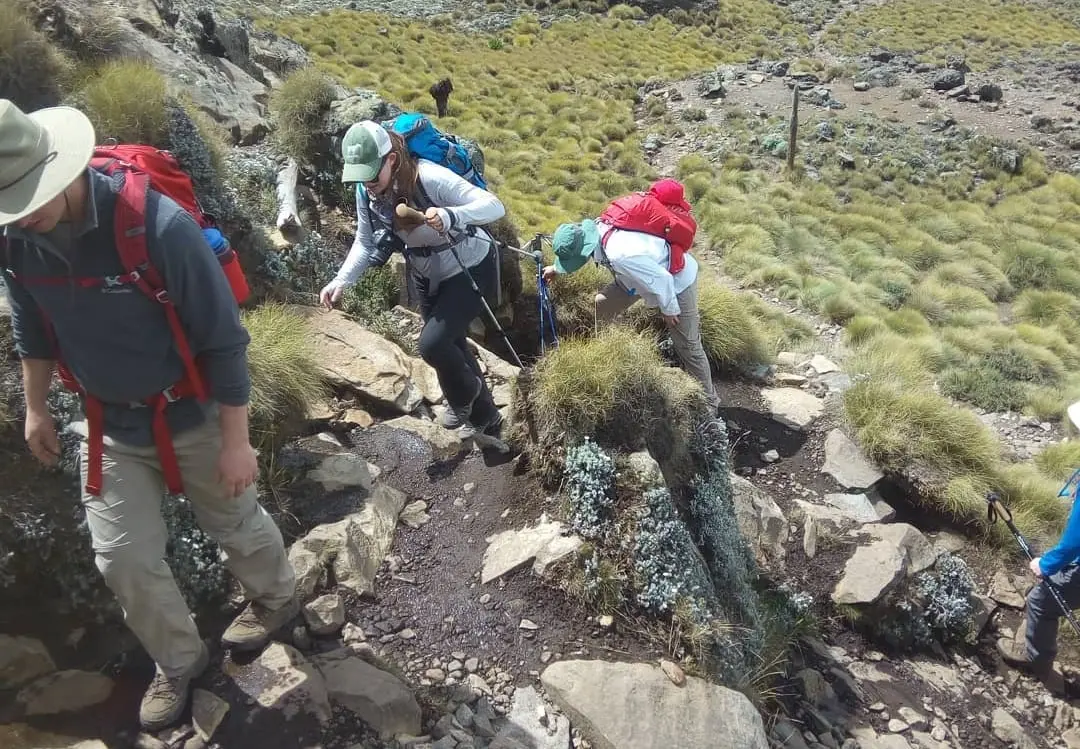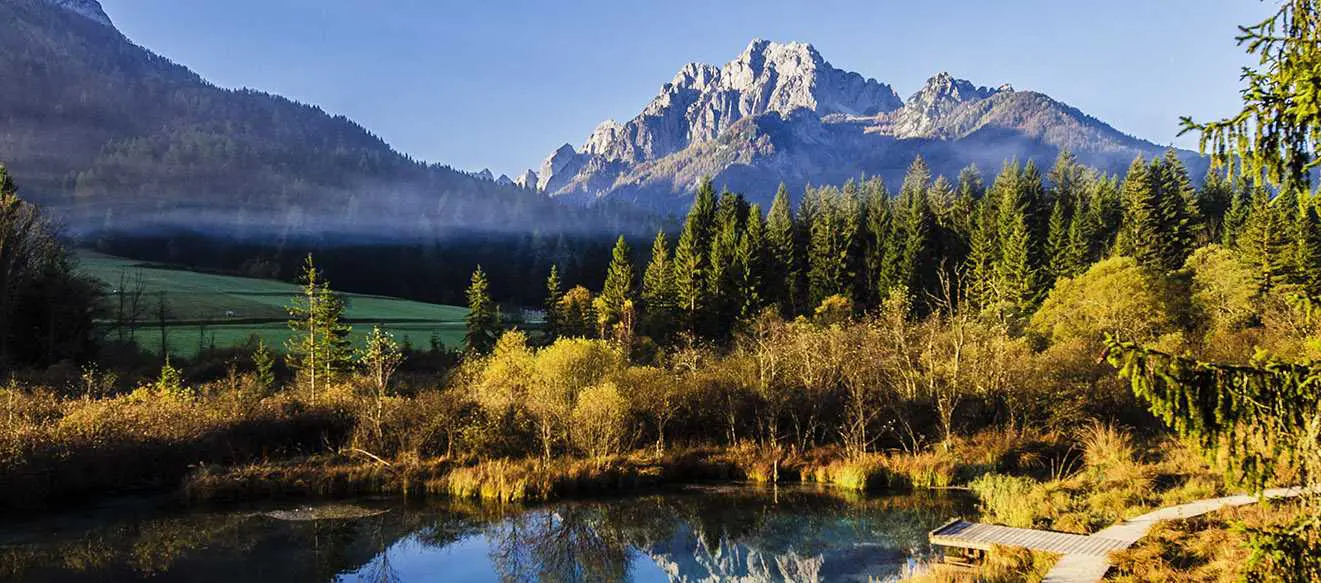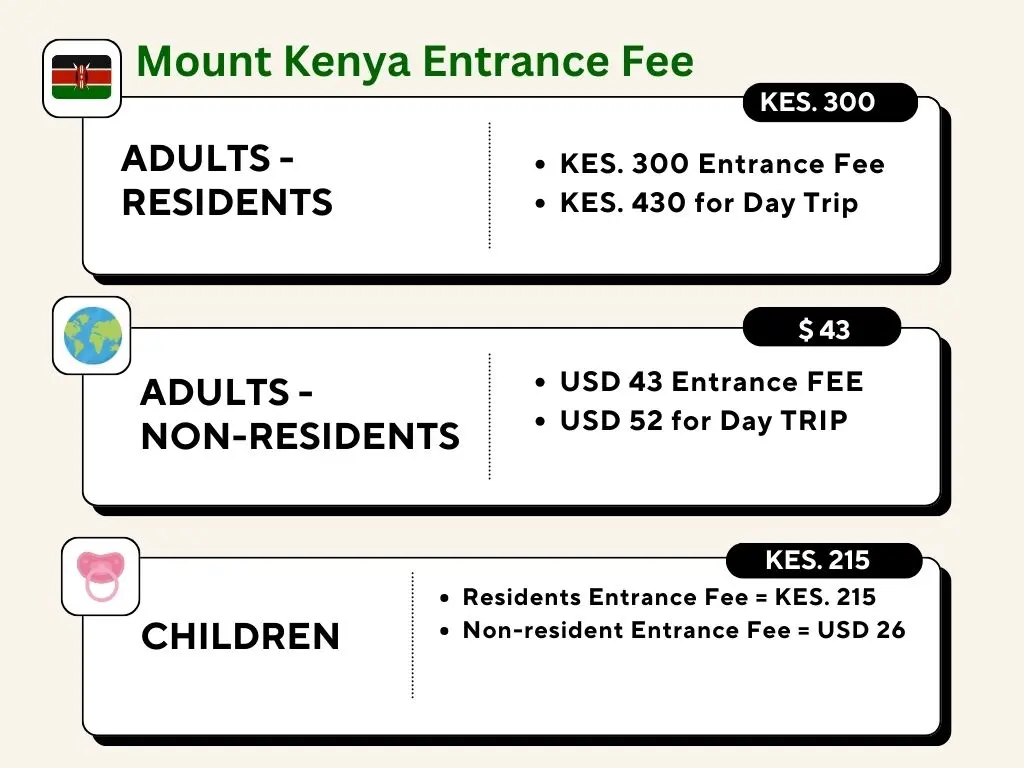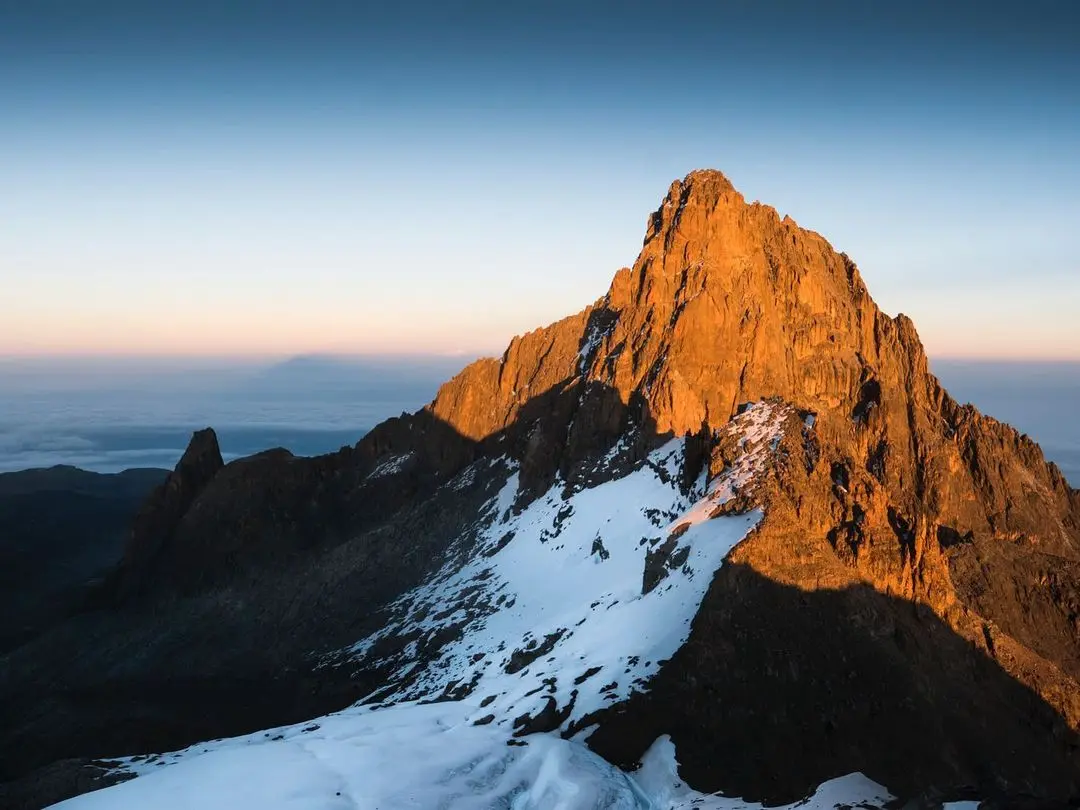Mount Kenya is a great place for people who like to hike. There are many different trails to choose from, ranging from the Sirimon Route to Chogoria Route, to the less known Burguret route. Therefore, whether you are a beginner or an experienced trekker, you will find something that suits you.
1. Sirimon Route
The Sirimon Route is a popular choice for hikers due to its
scenic beauty and relatively gentle slopes, making it suitable for trekkers of
varying experience levels. Some key points to note about the Sirimon Route
include:
- Description:
The route is known for its breathtaking alpine scenery and diverse
landscapes, offering trekkers a rich and immersive experience in the
natural beauty of Mount Kenya.
- Highlight:
Old Moses Camp is a notable stop along the Sirimon Route, providing
trekkers with a picturesque setting to rest and take in the surrounding
mountain views. The route also features stunning alpine vegetation, adding
to its allure.
- Difficulty
Level: Considered to be of moderate difficulty, the Sirimon Route
offers a manageable challenge for hikers looking to explore Mount Kenya
without facing extremely strenuous terrain.
- Duration:
Typically taking 4-5 days to complete, the Sirimon Route allows trekkers
to immerse themselves in the mountain environment while maintaining a
comfortable pace.
- Best
Itinerary: For an optimal trekking experience, the recommended
itinerary is to ascend via the Sirimon Route and descend via the Chogoria Route, allowing hikers to witness diverse landscapes and make the most of
their journey.
To ensure a successful trek along the Sirimon Route, it's
essential for hikers to be adequately prepared. This includes being equipped
with suitable gear, staying well-hydrated, and acclimatizing effectively to the
changing altitudes. Additionally, being mindful of weather conditions and
staying informed about any potential challenges on the trail can contribute to
a safe and enjoyable hiking experience.
2. Naro Moru Route
The Naro Moru Route is one of the most popular and
challenging trails up Mount Kenya. It offers trekkers a thrilling adventure and
breathtaking views along the way.
Highlights of the Naro Moru Route
1. Vertical Bog
The highlight of the Naro Moru Route is the Vertical Bog, a
unique feature that requires careful navigation. This section of the trail is
characterized by muddy and swampy terrain, making it quite challenging to pass
through. However, overcoming this obstacle adds to the sense of accomplishment
for hikers.
2. Point Lenana and other peaks
Another highlight of this route is reaching Point Lenana,
which is known for its magnificent views. Point Lenana is the third-highest
peak on Mount Kenya and offers panoramic vistas of the surrounding landscape,
including stunning valleys and rugged peaks.
Difficulty Level and Duration
- The
Naro Moru Route is considered difficult due to its steep sections and
demanding terrain. Trekkers should be prepared for long and strenuous days
of hiking.
- The
duration of the Naro Moru Route typically takes around 3-4 days to
complete. This timeframe allows hikers to acclimatize properly while still
enjoying a challenging ascent.
Best Itinerary: Ascend via Naro Moru, Descend via Chogoria
The best itinerary for the Naro Moru Route is to ascend via
Naro Moru and descend via Chogoria. This combination provides a diverse
experience as trekkers traverse different landscapes and terrains.
Tips for a Successful Trek along the Naro Moru Route
- Take
time to acclimatize: As with any high-altitude trek, acclimatization is
crucial for a safe and enjoyable experience. Plan for rest days along the
route to allow your body to adjust to the altitude.
- Be
prepared for changing weather conditions: Mount Kenya's weather can be
unpredictable, with rapid changes in temperature and rainfall. Pack
appropriate clothing layers and waterproof gear to stay comfortable
throughout your journey.
- Stay
hydrated and eat well: Proper nutrition and hydration are essential during
a challenging hike. Carry enough water and high-energy snacks to keep your
energy levels up.
- Use
trekking poles: Trekking poles can provide stability and reduce strain on
your joints, especially during steep ascents and descents.
- Hire
a local guide: Consider hiring an experienced local guide who is familiar
with the Naro Moru Route. They can provide valuable insight, ensure your
safety, and enhance your overall trekking experience.
3. Chogoria Route
The Chogoria Route on Mount Kenya is famous for its varied
landscapes and thrilling climb, offering hikers an immersive hiking experience.
Here are some key highlights and essential information for those planning to
tackle this challenging trail:
Highlight: Stunning Scenery
The route features the stunning Lake Ellis, as well as the
sheer cliffs of Temple and Diamond Couloirs, providing trekkers with
breathtaking natural scenery throughout their journey.
Difficulty Level: Challenging Trail
Chogoria Route is classified as a challenging trail,
requiring a good level of physical fitness and hiking experience to navigate
its terrain successfully.
Duration: 6-7 Days
Trekkers should allocate 6-7 days to complete the Chogoria
Route, allowing ample time to appreciate the remarkable landscapes and adjust
to changes in altitude.
Best Itinerary: Chogoria Up, Sirimon Down
Opting for the Chogoria up and Sirimon down itinerary is
recommended, as it allows hikers to gradually acclimatize to the changing
altitudes, reducing the risk of altitude-related issues.
When embarking on the Chogoria Route, it's crucial to be
well-prepared. Here are some tips for a successful trek along this captivating
trail:
- Ensure
you have adequate gear, including proper hiking boots, clothing suitable
for varied weather conditions, and essential camping equipment.
- Stay
hydrated and maintain a steady pace to manage the physical demands of the
trail effectively.
- Familiarize
yourself with altitude sickness symptoms and take necessary precautions to
prevent or address any altitude-related challenges.
- Respect
the natural environment by adhering to Leave No Trace principles and
following designated camping guidelines.
4. Burguret Route
The Burguret Route is a remote and less-frequented option
for experienced hikers seeking a challenging adventure on Mount Kenya. This
route offers a unique and rugged experience with breathtaking scenery and
panoramic views from the summit area.
Key Highlights
- Gorges
Valley: One of the highlights of the Burguret Route is the stunning Gorges
Valley, a deep and narrow gorge that adds an element of thrill to the
trek.
- Panoramic
Views: As you ascend along the Burguret Route, you will be rewarded with
awe-inspiring panoramic views of the surrounding landscape, including
other peaks of Mount Kenya.
Difficulty Level: Very Difficult
Duration: 5-6 days
Best Itinerary
The recommended itinerary for the Burguret Route is the
Burguret Circuit route. This route allows trekkers to experience the diverse
landscapes of Mount Kenya while avoiding retracing their steps.
Tips for a Successful Trek along the Burguret Route
- Physical
Fitness: Due to its challenging nature, it is essential to be in excellent
physical condition before attempting the Burguret Route. Regular
cardiovascular exercise and strength training will help prepare your body
for the demands of this trek.
- Proper
Gear: Ensure you have high-quality hiking gear, including sturdy boots,
warm clothing, waterproof layers, and a reliable backpack. Don't forget
essential items such as a headlamp, trekking poles, and a first aid kit.
- Acclimatization:
Take your time to acclimatize to the altitude by incorporating rest days
into your itinerary. This will help reduce the risk of altitude sickness
and allow your body to adjust to the changing conditions.
- Experienced
Guide: Consider hiring an experienced guide who is familiar with the
Burguret Route. They can provide valuable insights, navigation assistance,
and ensure your safety throughout the journey.
Embark on the Burguret Route for an unforgettable adventure,
where you can immerse yourself in the remote beauty of Mount Kenya while
conquering its challenging terrain.
5. Timau Route
The Timau Route is a challenging trail that approaches Mount
Kenya from the north, offering trekkers a unique perspective of the mountain's
beauty and wilderness. Here are the key details about this intriguing hiking
route:
- Highlight:
The Timau Route features the Liki North Hut, nestled amidst alpine meadows
and moorlands, providing trekkers with breathtaking views and a chance to
immerse themselves in the mountain's diverse flora and fauna.
- Difficulty
Level: The Timau Route is rated as moderate to difficult, making it
suitable for experienced hikers who are seeking a rewarding challenge.
- Duration:
Trekkers should plan for a 4-5 day journey along the Timau Route, allowing
ample time to acclimatize to the altitude and fully appreciate the natural
splendor of Mount Kenya.
- Best
Itinerary: Opting for the Timau up and Naro Moru down itinerary is
recommended for maximizing the trekking experience while descending through
a different trail.
To ensure a successful trek along the Timau Route, consider
the following tips:
- Proper
acclimatization is crucial due to the challenging nature of the route.
- Be
prepared for changing weather conditions by packing suitable gear and clothing.
- Stay
hydrated and maintain a steady pace to conserve energy during the ascent.
- Follow
all safety guidelines provided by experienced guides or park authorities.
Embarking on the Timau Route promises an unforgettable
adventure amidst Mount Kenya's pristine landscapes, making it a compelling
choice for avid hikers seeking a truly immersive mountain experience.
6. Kamweti Route
The Kamweti Route is an offbeat path on Mount Kenya that
offers solitude and wilderness exploration for adventurous trekkers. This
less-visited trail provides a unique hiking experience, allowing you to immerse
yourself in the untouched beauty of the mountain. Here are some key features
and essential information about the Kamweti Route:
Highlight: Austrian Hut and Unique Flora
One of the highlights of the Kamweti Route is the Austrian
Hut, which serves as a base camp for trekkers. This rustic hut offers basic
accommodation and stunning panoramic views of the surrounding landscape. The
rocky terrain along this route also boasts unique flora, including rare alpine plants and vibrant
wildflowers.
Difficulty Level: Moderate to Challenging
The Kamweti Route is considered to be of moderate to
challenging difficulty. Trekkers should have prior hiking experience and be
prepared for steep ascents, rugged terrain, and unpredictable weather
conditions.
Duration: 6-7 Days
The trek along the Kamweti Route typically takes 6-7 days to
complete. This duration allows for ample time to acclimatize to the high
altitude and fully appreciate the scenic beauty of the area.
Best Itinerary: Kamweti Circuit Route
The recommended itinerary for the Kamweti Route is the
Kamweti Circuit route. This loop allows you to explore different sections of
the mountain, offering diverse landscapes and varied experiences.
To ensure a successful trek along the Kamweti Route,
consider the following tips:
- Proper
Training: Before embarking on this challenging hike, it's essential to
prepare your body physically by engaging in regular cardiovascular
exercises and strength training.
- Acclimatization:
Due to the high altitude, it's crucial to acclimatize properly during your
trek. Take rest days at higher elevations to allow your body to adjust
gradually.
- Gear
and Equipment: Make sure you have appropriate hiking gear, including
sturdy boots, warm clothing layers, a good quality backpack, a reliable
tent, and a sleeping bag suitable for cold temperatures.
- Navigation
and Guides: As the Kamweti Route is less frequented, it's recommended
to hire an experienced guide who is familiar with the trail and can ensure
your safety throughout the journey.
By venturing off the beaten path and exploring the Kamweti
Route, you'll discover a hidden gem on Mount Kenya that promises solitude,
unique flora, and breathtaking views. Embrace the adventure and immerse
yourself in the untouched wilderness of this remarkable hiking route.
Technical Climbing Routes - Batian and Nelion
Mount Kenya offers not only popular hiking routes but also
technical climbing routes for experienced climbers seeking a more challenging
adventure. Two of the main technical climbing routes on Mount Kenya are the
Batian Route and the Nelion Route. Here are some key highlights, difficulty
levels, durations, and tips for each route:
1. Batian Route
- Key
Highlights: The Batian Route is known for its steep rock faces and
exposed sections, providing a thrilling climbing experience. It offers
breathtaking views of the surrounding peaks and glaciers.
- Difficulty
Level: The Batian Route is considered highly technical and requires
advanced mountaineering skills.
- Duration:
Climbing the Batian Route typically takes around 4-5 days, depending on
weather conditions and the climber's experience.
Tips to Hike through Batian Trail:
- Proper
training and acclimatization are crucial before attempting the Batian
Route.
- Hiring
an experienced guide or joining a guided expedition is strongly
recommended.
- Carry
all necessary climbing gear, including ropes, harnesses, helmets,
crampons, ice axes, and protective clothing.
- Stay
updated on weather conditions and be prepared for sudden changes.
2. Nelion Route:
- Key
Highlights: The Nelion Route offers a challenging ascent up Mount Kenya's
second-highest peak. It involves technical rock climbing sections and
exposed ridges with stunning views of the surrounding landscape.
- Difficulty
Level: The Nelion Route is considered moderately to highly technical and
requires previous rock climbing experience.
- Duration:
Climbing the Nelion Route usually takes around 3-4 days, depending on the
climber's skill level and weather conditions.
Tips to Hike Nelion Route:
- Proper
physical fitness and technical rock climbing skills are essential for
success on the Nelion Route.
- It is
advisable to climb with a partner or as part of a guided expedition for
safety reasons.
- Carry
all necessary climbing equipment and ensure it is in good condition.
- Familiarize
yourself with the route and study the topography before attempting the
climb.
These technical climbing routes on Mount Kenya offer a
thrilling and rewarding experience for climbers looking to push their limits
and conquer the mountain's challenging peaks. However, it is important to note
that these routes require advanced mountaineering skills, proper equipment, and
careful planning. Safety should always be the top priority when undertaking
such expeditions.
Less-Climbed Routes on Mount Kenya
Mount Kenya offers more than just the popular hiking trails;
there are lesser-known routes that promise a unique and adventurous experience
for bold trekkers. These less-climbed routes include Burguret, Timau, Meru, and
Ithanguni.
1. Burguret Route
- Description:
The Burguret Route is a remote and less-frequented path that appeals to
experienced hikers seeking solitude and unspoiled wilderness.
- Highlight:
Trekkers can immerse themselves in the beauty of Gorges Valley and enjoy
panoramic views from the summit area.
- Difficulty
Level: Considered challenging due to its remote nature and rugged
terrain.
- Duration:
Typically takes 5-6 days to complete.
- Recommended
Itinerary: Opting for the Burguret Circuit route provides a
comprehensive exploration of this trail.
2. Timau Route
- Description:
The Timau Route approaches Mount Kenya from the north, offering a
challenging journey through alpine meadows and moorlands.
- Highlight:
Trekkers will encounter the picturesque Liki North Hut amidst stunning
natural landscapes.
- Difficulty
Level: Considered challenging due to its steep ascents and varied
terrain.
- Duration:
Typically takes 4-5 days to complete.
- Recommended
Itinerary: Following the Timau up and Naro Moru down itinerary allows
trekkers to experience diverse landscapes.
3. Meru Route
- Description:
The Meru Route is a less-traveled path that presents trekkers with a blend
of scenic beauty and tranquility.
- Highlight:
Trekkers can appreciate the unique flora and fauna along the rocky terrain
of this route.
- Difficulty
Level: Moderately challenging with sections of steep ascents and
descents.
- Duration:
Typically takes 5-6 days to complete.
- Recommended
Itinerary: Embarking on the Meru Circuit route provides an
all-encompassing adventure.
4. Ithanguni Route
- Description:
The Ithanguni Route is an offbeat trail that offers trekkers a chance to
explore lesser-explored parts of Mount Kenya.
- Highlight:
Trekkers will be captivated by the rugged beauty of this route and its
unique natural features.
- Difficulty
Level: Moderately challenging with some technical sections requiring
caution.
- Duration:
Typically takes 3-4 days to complete.
- Recommended
Itinerary: Following the circular Ithanguni route ensures a thorough
exploration of this trail's offerings.
Preparation and Safety Tips for Hiking Mount Kenya
When you're getting ready to hike Mount Kenya, it's crucial
to prepare well and prioritize safety. Here are some important tips to
remember:
Get in Shape
- Mount
Kenya has different routes with varying levels of difficulty. Assess your
fitness level and choose a route that matches your abilities.
- Prioritize
regular exercise before your hike to improve your cardiovascular fitness,
strength, and flexibility.
- If
you have any concerns about your health, consult a doctor before taking on
a challenging physical activity.
Gear Up Properly
- Invest
in high-quality hiking gear, including durable hiking boots, layered
clothing for different weather conditions, a waterproof jacket and pants,
a hat, gloves, sunglasses, and sunscreen.
- Pack
a backpack with essential items like a headlamp or flashlight, spare
batteries, a first aid kit, water bottles or a hydration pack,
energy-packed snacks, navigation tools (such as a map and compass), and a
multi-tool.
Adjusting to the Altitude
- The
high altitude of Mount Kenya can cause altitude sickness. Take these steps
to acclimatize effectively:
- Gradually
increase your elevation during the hike and give your body time to adjust.
- Stay
hydrated by drinking plenty of water throughout the trek.
- Avoid
alcohol and smoking while you're climbing.
Prioritize Your Safety
- To
ensure your safety during the hike, consider hiring an experienced guide
or joining an organized tour.
- Study
the route beforehand and carry a detailed map with you.
- Follow
all rules and guidelines set by the park authorities.
- Stick
to marked trails to avoid getting lost or encountering dangerous animals.
- Be
aware of sudden weather changes and be prepared for colder temperatures or
rain showers.
Always remember that staying safe is the most important
thing when you're hiking. By getting yourself physically ready, having the
right equipment, adjusting properly to the altitude, and taking necessary
safety measures, you can have a fantastic and secure trek on Mount Kenya.
Best Time to Hike Mount Kenya via the Specific Routes
Mount Kenya experiences different weather conditions
throughout the year, affecting the best seasons for trekking. Here's a
breakdown of the ideal times to hike each route:
Sirimon Route
The best time to hike the Sirimon Route is during the dry
seasons from late June to October and late December to early March. These
months offer favorable weather for trekking.
Naro Moru Route
For the Naro Moru Route, the recommended hiking periods are
January to February and late June to October. During these months, the weather
is dry and visibility is good, allowing trekkers to enjoy the magnificent views
from Point Lenana.
Chogoria Route
The Chogoria Route is most enjoyable from late June to
October due to clear weather. During this time, it's easier to appreciate the
varied landscapes and thrilling ascent.
Burguret Route
The Burguret Route is ideal during the dry seasons for
better trail conditions and panoramic views from the summit area.
Timau Route
For the Timau Route, late December to early March and late
June to October are recommended for pleasant hiking conditions. These months
offer opportunities to witness alpine meadows and moorlands in full bloom.
Kamweti Route
The Kamweti Route is best tackled from January to February
and late June to October for favorable weather conditions that enhance
wilderness exploration.
By considering the specific characteristics of each route,
trekkers can choose the best time to hike Mount Kenya, ensuring a more
enjoyable and safe experience.



